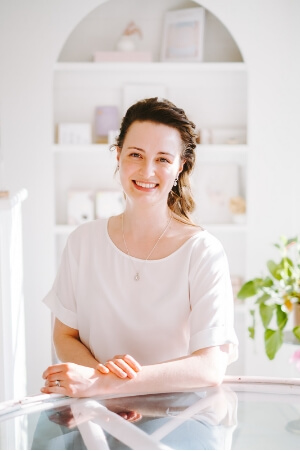You’ve gone through the work of writing engaging copy and making a beautiful website. You can now reward yourself with a huge mug of tea and ice-cream.
Your work, however, is not done. Your site is for real people, and it would be ideal to build a relationship with them. One way to do that is to invite them to connect with you through a page dedicated to just that.
Why do I need a Contact Form?
Simply, it’s a good way to encourage website visitors to contact you. It also provides the quickest way for people to reach out to you – you’re essentially giving people an open invitation to your inbox.
You shouldn’t be making people jump through hoops to contact you. Not having a contact form means that you’d ordinarily have an email address displayed somewhere on the page. This provides an extra step in the process and a level of inconvenience. This can put people off and could result in them not contacting you at all. The goal is to make it as easy as possible to reach you. Forcing people to leave your page (to go into their email) to contact you hurts your conversion and your traffic.
Why do I need a Whole Page for a Contact Form?
You’d like people to connect with you for a number of reasons, not only to say “hi”. You may want to find collaborators, or new products in your niche, or new people to feature on your blog. Your contact page can help you do all of this.
On this page, explain to your readers how they can work with you, or why they may want to get in touch with you. If you’re a beauty or tech blogger, you may be asked to write a product review. If you’re a service-based business, readers may want to send you an enquiry about your offerings. You’d like to cater to all possible situations without creating a complicated form.
A good use of this page is to detail all policies you have on collaborations, reviews, features and freebies. It’s also an added courtesy to state the length of time it generally takes for the person to receive a response from you.
Optimise your Contact Form
Most contact forms have “name”, “email”, and “message” fields. This can be a bit vague. It also usually leads to a long email trail between you and the person who filled in the form so that you can establish the purpose of their communication.
This standard contact form also doesn’t do anything to better inform the person reaching out to you. You would usually need to glean information from the initial contact to allow you to decide how to proceed with the relationship. It makes everyone’s life easier if you are provided with as much information as possible upfront.
To help you decide what sort of information to request in your contact form, consider the following:
What are the first few questions you ask someone when they contact you?
Try including 3 or 4 questions on the form. Too many will discourage people from filling in the form.
Do you offer a more than one service?
If so, get people to state what they’d like you to do for them.
Are you making appointments or booking meetings with this contact form?
If so, prepare people for this by asking whether they would be available to meet with you.
Asking these questions in the digital environment will also make initial phone or in-person conversations less awkward as you’ll have a lot of the information you’ll need to be able to move forward. This also allows you to have a digital version of the information ready to capture and add to your project management systems. This is infinitely better than having to jot everything frantically into a notebook when you’re in a meeting.
Conclusion
Creating an effective contact page is a step towards feeling less stressed every time somebody reaches out to you, saving time in the initial enquiry stages and being more productive with the information provided to you.
This was a blog post written in 2016 when I and my business were in a very different place, physically and mentally. This was written from the perspective of someone who was a few months into running her own business in a different country from where I now live.
I have the experience of running a business, as well as 4 years of working at a marketing agency behind me, and thus my perspective has changed somewhat. I am sharing my older blog posts (from a previous iteration of my website) as a way to have a record of my writing online again.
Melissa De Klerk

Website Designer and Developer, tea lover
I am the owner and founder of Melissa Helen Co.
I have been a web designer and developer since 2015 and have worked with Wordpress since 2008. Since I started my business in 2016, my interests have revolved around business strategy and how that influences their websites.
I design and build websites for small to medium-sized businesses, have many years of branding experience, and have worked in marketing agencies.
You can send me a message me through my contact page, and find me on social media by clicking the buttons below.
